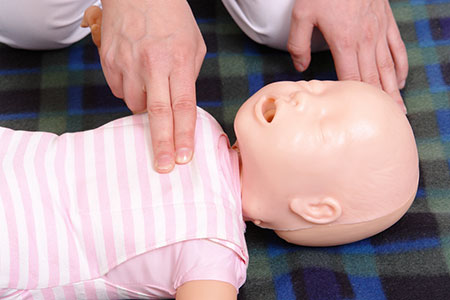Our CPR/AED and First Aid combo course includes Adult, Child and Infant CPR and First Aid training. Our Healthcare Provider courses cater to all healthcare professionals. The combo certification is valid for 2 years and includes a free mailed in wallet card.
Chapter 9 : Infant CPRUsually an infant’s heart stops because of a breathing emergency. For this reason, giving breaths with compressions is very important for infants. The process for responding to an infant is the same as responding to a child except for the following:
|
|
Usually an infant’s heart stops because of a breathing emergency. For this reason, giving breaths with compressions is very important for infants.
The process for responding to an infant is the same as responding to a child except for the following:

